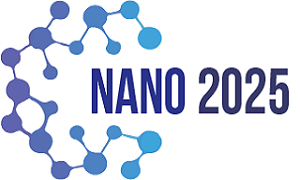2nd World Congress on
Nanotechnology
November 06-07, 2025 | London, UK
Address: Building A, Bath Road, Heathrow Boulevard, Sipson, West Drayton, UB7 0DU, United Kingdom
Nano 2025

Dokuz Eylul University, Turkey
Abstract:
Catalysts capable of electrochemical overall water splitting in acidic, neutral, and alkaline solution are important materials. This work develops bifunctional catalysts with single atom active sites through a pyrolysis-free route. Starting with a conjugated framework containing Fe sites, the addition of Ni atoms is used to weaken the adsorption of electrochemically generated intermediates, thus leading to more optimized energy level sand enhanced catalytic performance. The pyrolysis-free synthesis also ensured the formation of well-defined active sites within the framework structure, providing ideal platforms to understand the catalytic processes. The as-prepared catalyst exhibits efficient catalytic capability for electrochemical PAH splitting in both acidic and alkaline electrolytes. At a current density of 10 mA cm−2, the overpotential for photodegradation of PAHs.
Biography:
Prof. Dr. Delia Teresa Sponza is currently working as a professor at Dokuz Eylül University, Department of Environmental Engineering. Scientific study topics are; Environmental engineering microbiology, Environmental engineering ecology, Treatment of fluidized bed and activated sludge systems, Nutrient removal, Activated sludge microbiology, Environmental health, Industrial toxicity and toxicity studies, The effect of heavy metals on microorganisms, Treatment of toxic compounds by anaerobic / aerobic sequential processes, Anaerobic treatment of organic chemicals that cause industrial toxicity and wastewater containing them, Anaerobic treatability of wastewater containing dyes, Treatment of antibiotics with anaerobic and aerobic sequential systems, Anaerobic and aerobic treatment of domestic organic wastes with different industrial treatment sludges, Treatment of polyaromatic compounds with bio-surfactants in anaerobic and aerobic environments, Treatment of petrochemical, Textile and olive processing industry wastewater by sonication, Treatment of olive processing industry wastewater with nanoparticles and the toxicity of nanoparticles. She has many international publications with an H index of 43 and 6300 citations.
